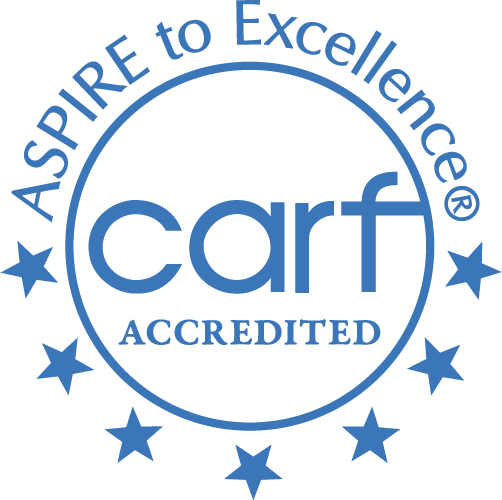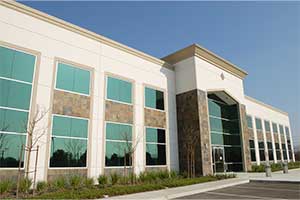Skip To Rehab Listing
With substance abuse treatment easily available, individuals struggling with drug and alcohol abuse can get assistance within their local area.
Addiction Recovery Service Settings and Treatment Methods In Mcconnelsville, Ohio
The types of treatment facilities in Mcconnelsville may include the following: short term drug rehab programs, inpatient detox facilities, inpatient treatment programs, long term treatment centers, outpatient hospital programs.
Those seeking treatment can find conveniently located programs nearby with a variety of rehabilitation methods designed for successful rehabilitation. These methods, which include both long-established and newer approaches, can consist of the following: brief intervention approach, trauma therapy, group therapy, trauma-related counseling, substance abuse counseling approach, motivational interviewing.
Programs Addressing Special Requirements for Addiction Recovery
Drug and alcohol abuse can vary based off of factors, such as the type of drug causing the addiction. Many recovery facilities in the Mcconnelsville region provide facilities purposed to customize treatment to a client's specific needs. These programs contain the following: substance abuse education, veterans, aftercare/continuing care, suicide prevention services, legal advocacy, active duty military.
Patients who are not sure what their needs are can contact these rehabs for access to patient resources that can direct them toward the appropriate program.
Paying For Treatment - Payment & Financing Flexibility
People struggling with substance abuse come from various economic conditions, but a range of financing options makes recovery economically accessible for anybody. Funding options include the following: private insurance, cash or self-payment, payment assistance, medicaid, medicare, access to recovery (atr) voucher, state education funds.
Individuals searching for rehab can contact a rehab program to find out more about what payment options are available to them.
Mcconnelsville's drug and alcohol centers, resources, and payment alternatives provide people who are struggling with drug and alcohol use an opportunity to begin a sustainable recovery plan.
Commonly Asked Questions about Addiction and Treatment
What are the signs of addiction?
Physical symptoms: Changes in appearance, such as weight loss or gain, poor hygiene, bloodshot eyes, or constricted pupils, can be indicative of addiction. Additionally, the person may display signs of intoxication or withdrawal, such as tremors, sweating, or flu-like symptoms.
Behavioral changes: Addiction can lead to significant shifts in behavior, such as increased secrecy, social isolation, or sudden mood swings. The person may neglect responsibilities, withdraw from activities they once enjoyed, or display uncharacteristic aggression or irritability.
Loss of control: A hallmark of addiction is the inability to control substance use or engagement in harmful behaviors, even when the person expresses a desire to stop. This can lead to increased frequency or intensity of use, as well as unsuccessful attempts to quit or cut down.
Preoccupation: The person may become preoccupied with obtaining, using, or recovering from the effects of the substance or behavior, often at the expense of other aspects of their life.
Risk-taking: Addiction can lead to increased risk-taking behaviors, such as using substances in dangerous situations, driving under the influence, or engaging in risky sexual activities.
Neglecting relationships: Addiction can strain personal relationships, as the person may prioritize their substance use or behavior over their connections with friends and family.
Changes in sleep patterns and energy levels: Addiction can cause disruptions in sleep patterns, leading to insomnia or excessive sleepiness. The person may also experience fluctuations in energy levels, such as periods of hyperactivity followed by lethargy.
Tolerance and withdrawal: Over time, individuals with addiction may develop a tolerance to the substance or behavior, requiring higher doses or more frequent engagement to achieve the desired effect. If the person stops using the substance or engaging in the behavior, they may experience withdrawal symptoms, such as anxiety, irritability, insomnia, or physical discomfort.
Continued use despite negative consequences: A key sign of addiction is the persistence of substance use or engagement in harmful behaviors despite experiencing negative consequences, such as health issues, relationship problems, financial difficulties, or legal troubles.
Neglect of responsibilities: Addiction can cause a person to neglect personal, professional, or family obligations, resulting in job loss, financial difficulties, or relationship problems.
How to protect children in a substance abusing family?
"Protecting children in a substance-abusing family can be a significant challenge. Here are several steps that can be taken to ensure the safety and well-being of children in such circumstances:
Recognize the Problem: The first step in protecting children is acknowledging the issue. Denying the existence of substance abuse can lead to further harm.
Prioritize Child's Safety: If the substance abuse is causing dangerous situations, the child's safety must come first. This might mean making difficult decisions, such as temporary separation from the substance-abusing family member.
Seek Professional Help: Reach out to professionals who can guide you through this situation. Social workers, psychologists, and addiction specialists can provide valuable assistance and resources.
Encourage and Support Treatment: If the person with the addiction is willing, encourage them to seek professional help. Therapy, rehab, and support groups can all be beneficial.
Educate the Child: Age-appropriate education about drug and alcohol abuse can be helpful. This can help them understand it's not their fault and that the substance abuse is a disease.
Provide a Stable Environment: Create an environment that provides as much stability and routine as possible. This can help the child feel more secure amidst the chaos that substance abuse can bring.
Offer Emotional Support: Make sure the child knows they can express their feelings and fears to you. Validating their feelings and offering comfort is crucial.
Seek Support for the Child: Counseling or support groups specifically for children of substance abusers can provide them with tools to cope.
Report Neglect or Abuse: If the substance abuse leads to neglect or abuse, it must be reported to local child protective services. This can be a painful step, but it's necessary to ensure the child's safety.
Encourage Healthy Coping Mechanisms: Teach the child healthy ways to handle their emotions, such as through art, music, journaling, sports, or talking about their feelings.
How can society prevent teen substance abuse?
Preventing teen substance abuse requires a comprehensive, multifaceted approach that involves various sectors of society, including families, schools, communities, and the healthcare system. Here are some strategies that can be employed:
Education and Awareness: Schools and communities can provide education about the dangers of substance abuse, the nature of addiction, and the benefits of healthy lifestyle choices. This education should be accurate, age-appropriate, and engaging.
Family Engagement: Parents and caregivers play a critical role in prevention. They can talk openly with their children about substance abuse, set clear expectations around substance use, monitor their children's activities and friendships, and provide a supportive and nurturing environment.
Early Intervention: Early identification of risk factors for substance abuse (such as mental health issues, academic struggles, or behavioral problems) can allow for timely intervention. Healthcare providers, educators, and parents can all play a role in identifying and addressing these risk factors.
Access to Mental Health Services: Teens with mental health conditions are at a higher risk of substance abuse. Ensuring access to mental health services can help address these underlying issues and reduce the risk of substance abuse.
Healthy Activities: Providing teens with opportunities for healthy, engaging activities (like sports, arts, volunteering, etc.) can reduce boredom and stress, provide a sense of purpose and belonging, and offer positive alternatives to substance use.
Community Support: Communities can create environments that support healthy choices and discourage substance use. This can include things like enforcing age restrictions on the sale of alcohol and tobacco, providing safe and substance-free recreational opportunities for teens, and fostering a community culture that values health and wellbeing.
Substance Abuse Programs: Schools and communities can implement evidence-based substance abuse prevention programs. These programs can teach skills for resisting peer pressure, making healthy decisions, and coping with stress.
Policy Measures: Policies can be implemented that help prevent substance abuse, such as those that limit the advertising of alcohol and tobacco products, regulate the prescription of addictive medications, and support substance abuse prevention and treatment services.
Peer Support and Leadership: Peer-led initiatives can be very effective in preventing teen substance abuse. Teens may be more likely to listen to and be influenced by their peers. Peer leaders can model healthy behaviors, challenge norms around substance use, and provide support to their peers.













